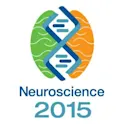
Frontiers news
08 Nov 2015
Most viewed Neuroscience articles in October 2015
An algorithm to predict the connectome of neural microcircuits Michael W. Reimann, James G. King, Eilif B. Muller, Srikanth Ramaswamy and Henry Markram* Marmosets treated with oxytocin are more socially attractive to their long-term mate Jon Cavanaugh*, Michelle C. Huffman, April M. Harnisch and Jeffrey A. French Being asked to tell an unpleasant truth about another person activates anterior insula and medial prefrontal cortex Melissa M. Littlefield*, Martin J. Dietz, Des Fitzgerald, Kasper J. Knudsen and James Tonks Dynamics of place, boundary and object encoding in rat anterior claustrum Maciej M. Jankowski and Shane M. O‘Mara* Sleep deprivation alters choice strategy without altering uncertainty or loss aversion preferences O’Dhaniel A. Mullette-Gillman*, Yoanna A. Kurnianingsih and Jean C. J. Liu Cognitive and neural plasticity in older adults’ prospective memory following training with the Virtual Week computer game Nathan S. Rose*, Peter G. Rendell, Alexandra Hering, Matthias Kliegel, Gavin M. Bidelman and Fergus I. M. Craik Dynamic expression of long noncoding RNAs and repeat elements in synaptic plasticity Jesper L. V. Maag, Debabrata Panja, Ida Sporild, Sudarshan Patil, Dominik C. Kaczorowski, Clive R. Bramham, Marcel E. Dinger* and Karin Wibrand* Synaptic plasticity in a recurrent neural network for versatile and adaptive behaviors of a walking robot Eduard Grinke*, Christian Tetzlaff, […]




